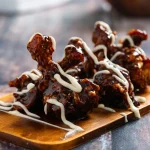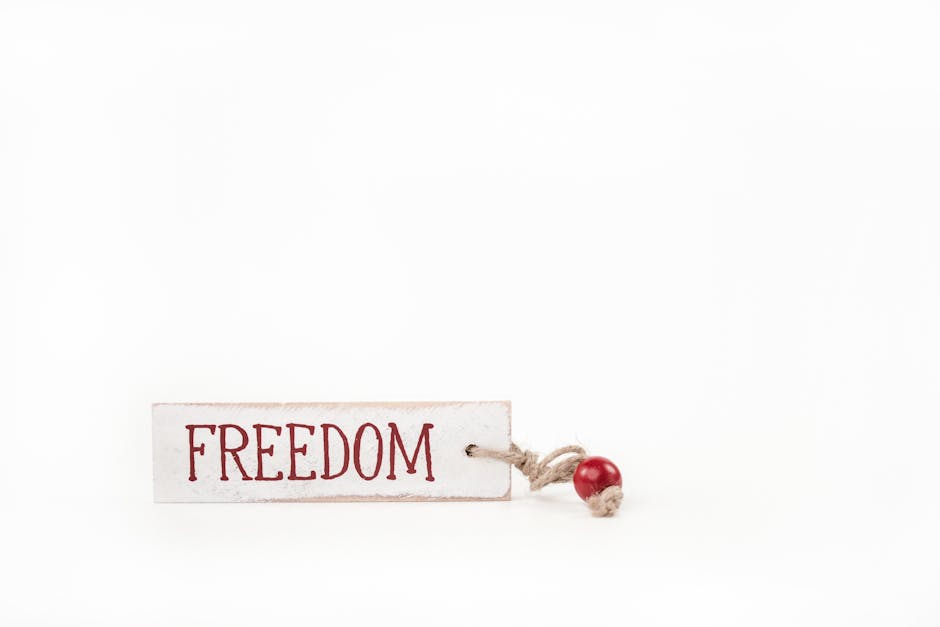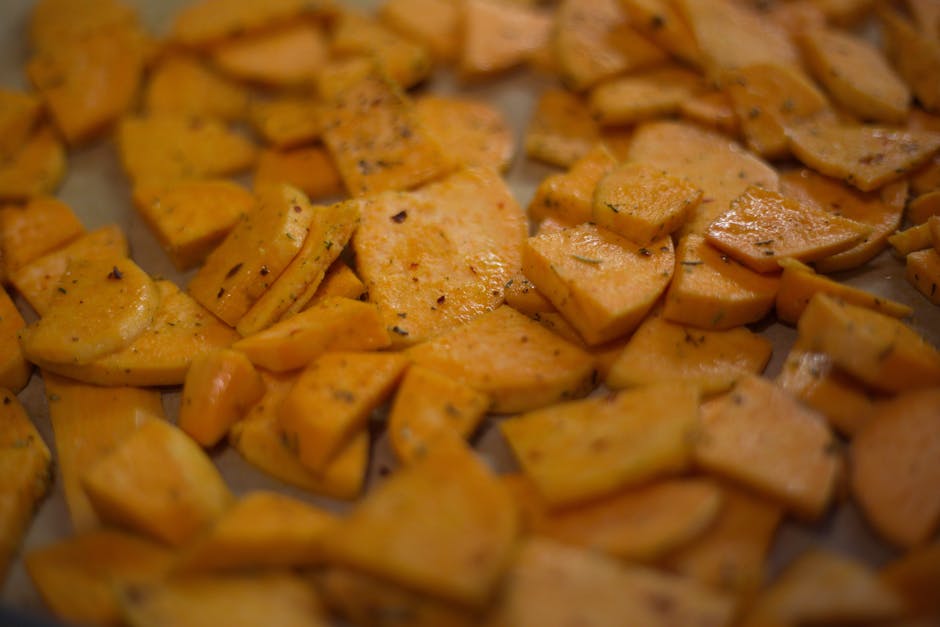Prepare yourself for a journey into the creamy, tangy heart of a culinary legend: the Classic New York Cheesecake. More than just a dessert, it’s a symbol of American culinary history, a testament to the enduring power of simple, high-quality ingredients, and a slice of New York City’s vibrant past. While pinpointing its exact origin is tricky, the cheesecake’s story is interwoven with the city’s immigrant history, evolving from humble beginnings to its current status as a globally recognized icon. Its rich history is often linked to early 20th-century German and Eastern European immigrant communities who brought their own cheesecake traditions to the melting pot that was (and is) New York. These early cheesecakes were likely less refined than the version we know today, but they laid the groundwork for the iconic dessert’s development.
The New York style, characterized by its dense, creamy texture, rich flavor, and graham cracker crust, solidified its place in the culinary landscape in the mid-20th century. Many attribute the rise of the modern New York cheesecake to the city’s numerous Jewish delis and bakeries, where it became a staple alongside other classic treats. The post-World War II boom saw a surge in popularity, fueled by the burgeoning middle class and a growing appreciation for indulgent desserts. This period cemented its place in American culture, transforming it from a simple dessert into a symbol of celebration and indulgence. Today, estimations suggest that millions of New York cheesecakes are sold annually across the United States alone, showcasing its enduring appeal.
Beyond its commercial success, the New York cheesecake holds significant cultural weight. It’s frequently featured in movies, television shows, and literature as a symbol of luxury, comfort, and celebration. Its presence in popular culture reinforces its status as a quintessential American dessert, capable of evoking feelings of nostalgia and joy. The classic recipe, while simple in its core ingredients (cream cheese, sugar, eggs, and a graham cracker crust), requires precision and technique to achieve that perfect balance of tangy creaminess and satisfying texture. This recipe, passed down through generations of bakers and home cooks, represents more than just a dessert; it’s a legacy, a testament to culinary craftsmanship, and a delightful journey through New York City’s rich culinary history.
Ingredients and Measurements
This section details the ingredients and precise measurements needed for a truly classic New York-style cheesecake. Accuracy is paramount in achieving the perfect creamy texture and rich flavor. Using a kitchen scale is highly recommended for precise measurements, especially for the dry ingredients. However, if you are using volume measurements, ensure you use the correct measuring techniques –spooning flour into a cup and leveling it off, rather than scooping directly from the bag.
For the Crust:
- 1 ½ cups (150g) graham cracker crumbs – Use good quality graham crackers for the best flavor. Avoid using crumbs that are too fine, as they can result in a crumbly crust. If making your own crumbs, pulse graham crackers in a food processor until finely ground but not powdery.
- ¼ cup (50g) granulated sugar – This adds sweetness and helps bind the crust together.
- 6 tablespoons (85g) unsalted butter, melted – Make sure the butter is completely melted but not browned for even distribution. Let the melted butter cool slightly before mixing it with the crumbs.
For the Filling:
- 32 ounces (900g) cream cheese, softened to room temperature – This is crucial! Room temperature cream cheese will be smooth and easily blendable. If using cold cream cheese, the mixture may become lumpy. Allow the cream cheese to sit out at room temperature for at least 2 hours, or preferably overnight.
- 1 ¾ cups (350g) granulated sugar – Gradually add the sugar to the cream cheese to prevent lumps.
- ¼ cup (60ml) sour cream – Full-fat sour cream is recommended for the richest flavor and texture.
- 2 teaspoons pure vanilla extract – Use high-quality vanilla extract for the best flavor impact.
- 4 large eggs – Use large eggs at room temperature for the best consistency. Cold eggs can cause cracking and uneven baking. Bring the eggs to room temperature by letting them sit out for about 30 minutes.
- 2 tablespoons all-purpose flour – This helps stabilize the filling and prevents cracks. Whisk the flour with a little of the cream cheese mixture before adding it to the rest of the batter to prevent lumps.
Optional additions:
- 1 tablespoon lemon zest – Adds a bright citrus note that complements the richness of the cheesecake.
- Pinch of salt – Enhances the overall flavor profile.
- ½ teaspoon ground cinnamon – Adds a subtle warmth to the filling.
Important Note: All ingredients should be at room temperature unless otherwise specified. This ensures even mixing and prevents lumps in the batter. Precise measurements are crucial for achieving the perfect texture and taste of a classic New York cheesecake. Don’t rush this process; taking the time to measure accurately will make all the difference.
Crust Preparation
The crust is the foundation of a perfect New York cheesecake, providing a delightful textural contrast to the creamy filling. While seemingly simple, a well-made crust enhances the overall experience. This recipe utilizes a classic graham cracker crust, but feel free to experiment with other cookies like digestive biscuits or even chocolate wafers for variations.
Ingredients:
- 1 ½ cups (150g) graham cracker crumbs (about 12 full graham crackers, finely crushed)
- ¼ cup (50g) granulated sugar
- 6 tablespoons (85g) unsalted butter, melted
Equipment:
- 9-inch springform pan
- Food processor (recommended for efficient crumb creation)
- Measuring cups and spoons
- Mixing bowl
- Fork or spatula
Instructions:
Begin by preparing your graham cracker crumbs. The finest crumbs create the most cohesive and smooth crust. If using a food processor, pulse the graham crackers until they reach a fine, almost powdery consistency. Avoid over-processing, as this can create a pasty texture. If using a zip-top bag and rolling pin, be sure to crush the crackers thoroughly, paying close attention to any larger pieces that need further pulverizing.
In a medium mixing bowl, combine the graham cracker crumbs and granulated sugar. Ensure the sugar is evenly distributed throughout the crumbs. This will prevent pockets of sweetness and ensure consistent flavor throughout the crust.
Gradually add the melted unsalted butter to the crumb mixture. Use melted butter at room temperature to ensure even distribution and prevent clumping. Stir gently with a fork or spatula until the crumbs are evenly moistened. The mixture should be moist enough to hold together when pressed but not so wet that it becomes soggy.
Transfer the crumb mixture to your 9-inch springform pan. Press the mixture firmly and evenly into the bottom of the pan. Use the bottom of a measuring cup or your fingers to create an even layer. This step is crucial for a stable and well-structured crust. For a neater edge, you can use the back of a spoon to create a slightly sloped edge around the perimeter.
Refrigerate the crust for at least 30 minutes before adding the cheesecake filling. This chilling step allows the butter to solidify, resulting in a firmer and less crumbly crust. It also helps to prevent the crust from becoming soggy once the filling is added.
Professional Tip: For an even more flavorful crust, consider adding a teaspoon of cinnamon or a pinch of nutmeg to the crumb mixture. Experiment with different flavor profiles to find your perfect crust!
Cheesecake Batter Preparation
Creating the perfect cheesecake batter is crucial for achieving that signature creamy, dense texture. This section details the process, emphasizing precision and technique for optimal results.
Begin by ensuring all your ingredients are at room temperature. This is particularly important for the cream cheese; cold cream cheese will result in a lumpy batter. Let it sit out for at least an hour, or even longer, until it’s softened but not melted. Using room temperature cream cheese is non-negotiable for a smooth batter.
In a large mixing bowl, beat 32 ounces (4 packages, or about 1 kg) of full-fat cream cheese using an electric mixer on medium speed until completely smooth and creamy. Full-fat cream cheese provides the richest flavor and texture; do not substitute low-fat or fat-free. Scrape down the sides of the bowl as needed to ensure everything is evenly incorporated. This process should take approximately 2-3 minutes.
Gradually add 1 ½ cups (300g) of granulated sugar to the beaten cream cheese, mixing on low speed to begin. Once the sugar is incorporated, increase the speed to medium and continue beating until the mixture is completely smooth and fluffy. This will take another 2-3 minutes. Avoid over-mixing at this stage, as it can incorporate too much air, leading to cracks in the finished cheesecake.
Next, add 1 cup (240ml) of sour cream. Beat on low speed until just combined. Sour cream adds a wonderful tang and creaminess to the cheesecake. Again, avoid over-mixing.
In a separate bowl, whisk together 4 large eggs and 1 teaspoon of pure vanilla extract. Using room temperature eggs helps to prevent curdling of the batter. Add the egg mixture to the cream cheese mixture in two additions, mixing on low speed after each addition until just combined. Be gentle and avoid over-mixing to prevent incorporating too much air.
Finally, gently fold in ½ cup (60g) of all-purpose flour. Adding the flour gently helps to avoid lumps and ensures a smooth texture. Use a spatula to fold the flour into the batter in a circular motion from the bottom up, making sure not to overmix. Only mix until the flour is just incorporated.
Once the batter is completely smooth and homogenous, it’s ready to be poured into your prepared cheesecake pan. Remember to strain the batter through a fine-mesh sieve for an extra-smooth texture, if desired. This step is optional but highly recommended for a truly luxurious cheesecake.
Important Note: Do not over-mix the batter at any stage. Over-mixing will incorporate too much air, leading to cracks and a less dense cheesecake. Take your time and be gentle, and you’ll be rewarded with a perfectly smooth and creamy batter.
Baking Techniques for the Perfect New York Cheesecake
Baking a classic New York cheesecake requires precision and attention to detail. This section outlines the crucial techniques to ensure a creamy, smooth, and perfectly cracked top.
Preparing the Water Bath: The water bath, also known as a bain-marie, is essential for preventing cracks and creating a luxuriously smooth texture. It provides a humid environment that gently cooks the cheesecake, preventing the edges from drying out and over-browning. To create the water bath, place your cheesecake pan – preferably a springform pan – inside a larger roasting pan. Pour enough hot water into the roasting pan to reach about halfway up the sides of the springform pan. Do not let the water go over the top of the springform pan; this can cause the cheesecake to become watery.
Blind Baking the Crust (Optional): While not strictly necessary for all recipes, blind baking the crust can enhance its texture and prevent it from becoming soggy. If you choose to blind bake, pre-bake the crust for 10-12 minutes at 350°F (175°C). Line the crust with parchment paper and fill it with pie weights or dried beans to prevent it from puffing up during baking. Remove the weights and parchment paper after blind baking.
Slow and Steady Baking: The key to a perfectly baked cheesecake is slow and even baking. Start by baking at 350°F (175°C) for 15 minutes. Then, immediately reduce the oven temperature to 200°F (95°C) and continue baking for approximately 1 hour and 15 minutes to 1 hour and 30 minutes. Do not open the oven door during this time, as this can cause the cheesecake to collapse. The cheesecake is done when the center is just set but still slightly jiggly. A slight jiggle in the center is normal; it will firm up as it cools.
Cooling Down Gradually: After baking, turn off the oven and leave the cheesecake inside with the oven door slightly ajar for about an hour. This gradual cooling prevents sudden temperature changes that can lead to cracking. Then, carefully remove the cheesecake from the water bath and let it cool completely on a wire rack at room temperature. This process can take several hours. Avoid placing the cheesecake in the refrigerator while it’s still warm, as this can also cause cracking.
Refrigeration: Once the cheesecake has cooled completely at room temperature, cover it tightly with plastic wrap and refrigerate for at least 4 hours, or preferably overnight. This allows the cheesecake to fully set and develop its rich, creamy texture. Refrigerating overnight enhances the flavor and allows for easier slicing.
Removing from the Springform Pan: To remove the cheesecake from the springform pan, carefully run a thin knife or offset spatula around the edges to loosen it. Then, gently release the sides of the springform pan. Be patient and gentle to avoid damaging the cheesecake. If the cheesecake is still slightly stuck, you can run the pan under warm water for a few seconds to help loosen it. Serve and enjoy your perfectly baked New York Cheesecake!
Cooling and Chilling: The Key to Creamy Perfection
The cooling and chilling process is arguably the most crucial step in achieving a classic New York cheesecake’s signature smooth, creamy texture. Rushing this stage can lead to cracks, a dense consistency, and a less-than-perfect final product. Patience is key!
Immediately after baking, carefully remove the cheesecake from the oven. The center might still appear slightly jiggly – this is normal. Avoid opening the oven door prematurely, as sudden temperature changes can cause cracking. Let the cheesecake cool in the oven with the door slightly ajar for at least one hour. This gradual cooling minimizes the shock to the delicate custard.
After the initial hour in the oven, carefully remove the cheesecake from the oven and let it cool completely on a wire rack. This allows for even air circulation around the entire cake, preventing condensation and uneven cooling. This cooling process on the rack should take approximately another 2-3 hours. Resist the urge to speed this up by placing it in the refrigerator prematurely; this can lead to cracking.
Once completely cool at room temperature (it should be no longer warm to the touch), gently run a thin, flexible knife or offset spatula around the edges of the cheesecake to loosen it from the springform pan. This prevents sticking and makes removal easier. Do not skip this step, as forcing the cheesecake out of the pan when it’s still slightly warm can cause it to break or crumble.
Cover the cheesecake tightly with plastic wrap, pressing it directly onto the surface to prevent a skin from forming. This is extremely important for maintaining moisture and preventing the cheesecake from drying out during its extended chilling period. Use plastic wrap that clings tightly; a loose covering will allow air to reach the surface, potentially leading to a dry top.
Refrigerate the cheesecake for at least 8 hours, preferably overnight (12 hours or more). This extended chilling time allows the flavors to meld, the cheesecake to set completely, and the filling to achieve its optimal creamy texture. Longer chilling times generally result in a better-tasting cheesecake, allowing for a more intense flavor profile.
Before serving, carefully remove the cheesecake from the refrigerator at least 30 minutes before you plan to serve it. This allows it to come to a slightly warmer temperature, making it easier to slice and serve without crumbling. The slightly warmer temperature also enhances the flavor and creaminess.
For an even more impressive presentation, you might consider running a clean, damp paper towel around the outside of the springform pan before removing the cheesecake to create a clean edge. This is a subtle but effective detail that elevates the overall appearance of your culinary masterpiece.
Following these cooling and chilling instructions diligently will ensure that your classic New York cheesecake is not only delicious but also visually stunning. Enjoy the fruits of your labor – and the creamy, decadent reward!
Topping and Decoration (Optional)
While the classic New York cheesecake stands beautifully on its own, a thoughtful topping or decoration can elevate it to the next level. The options are truly endless, allowing you to customize your cheesecake to suit any occasion or personal preference. Remember to consider the overall flavor profile of your cheesecake when selecting a topping – you want to complement, not compete.
Classic Sour Cream Topping: A simple yet elegant choice, a sour cream topping adds a delightful tanginess and creamy texture that contrasts perfectly with the rich cheesecake. For this, combine 1 cup of sour cream with 2 tablespoons of powdered sugar and 1 teaspoon of vanilla extract. Whisk until smooth and fluffy. Spread gently over the cooled cheesecake, ensuring even coverage. Chill for at least 30 minutes before serving to allow the topping to set.
Fresh Berry Compote: The vibrant colors and juicy sweetness of fresh berries make for a stunning and delicious topping. Combine 2 cups of your favorite berries (strawberries, blueberries, raspberries, or a mix) with ¼ cup of sugar and 1 tablespoon of lemon juice in a saucepan. Simmer over medium heat until the berries soften and release their juices, about 5-7 minutes. Allow to cool completely before spooning over the chilled cheesecake. For a thicker compote, you can add a tablespoon of cornstarch to the mixture before simmering.
Chocolate Ganache: For a decadent and intensely chocolatey finish, a simple chocolate ganache is hard to beat. Heat ½ cup of heavy cream in a saucepan until it just begins to simmer. Pour the hot cream over 4 ounces of finely chopped semi-sweet chocolate in a heatproof bowl. Let it sit for a minute, then whisk gently until smooth and glossy. Allow the ganache to cool slightly before pouring it over the cheesecake. A drizzle of melted dark chocolate can add an extra touch of elegance.
Caramel Sauce: A rich caramel sauce offers a delightful balance of sweet and salty, complementing the creamy cheesecake beautifully. You can either make your own caramel sauce (plenty of recipes are available online) or use a high-quality store-bought version. Drizzle the caramel sauce in a decorative pattern over the cooled cheesecake. A sprinkle of sea salt flakes enhances the flavor even further.
Garnish Ideas: Beyond the main topping, consider adding a final touch with various garnishes. Fresh berries, chocolate shavings, toasted nuts (such as pecans or almonds), candied fruit, or even a dusting of powdered sugar can elevate the presentation. Remember to keep the garnish simple and elegant; you want it to complement, not overwhelm, the cheesecake. Consider the color and texture of your chosen toppings to create a visually appealing and harmonious final product. Use piping bags or spoons to create interesting textures and patterns.
Important Note: Always ensure your cheesecake is completely chilled before adding any topping or decoration. This prevents the topping from melting or the cheesecake from becoming overly soft. Proper chilling is crucial to maintain the cheesecake’s structure and prevent any unwanted separation or melting.
Recommendations for Classic New York Cheesecake
This Classic New York Cheesecake recipe is best enjoyed when served chilled. Allow the cheesecake to fully cool to room temperature before refrigerating for at least 4 hours, preferably overnight, to allow the flavors to meld and the texture to set properly. This ensures a creamy, smooth, and decadent experience.
Serving Suggestions: The richness of the cheesecake makes it a perfect dessert on its own. However, for an elevated presentation and taste experience, consider serving it with a variety of accompaniments. A dollop of fresh whipped cream or a drizzle of berry coulis (pureed berries strained through a sieve) adds a delightful contrast in texture and flavor. A sprinkle of fresh berries, such as raspberries, strawberries, or blueberries, provides a vibrant pop of color and sweetness. A light dusting of cocoa powder or chocolate shavings adds a touch of sophistication for chocolate lovers. For a more indulgent experience, consider a caramel sauce or a cherry topping.
Storage: Store leftover cheesecake in an airtight container in the refrigerator for up to 5 days. To prevent the cheesecake from drying out, ensure it is properly covered. If you notice the top starting to dry out, you can cover it with plastic wrap directly to maintain moisture. Freezing is not recommended as it can affect the texture of the cheesecake. For best quality, consume within the recommended timeframe.
Complementary Dishes: The richness of the New York cheesecake pairs wonderfully with lighter, contrasting flavors. Consider serving it alongside a refreshing fruit salad, a light citrus sorbet, or a simple green salad with a light vinaigrette. For a more substantial pairing, a light and buttery shortbread cookie or a crisp gingersnap cookie complements the creamy texture beautifully. Avoid pairing it with overly sweet or heavy dishes, as this can overwhelm the palate.
Calorie and Nutritional Information (per serving, approximate): The exact nutritional values will vary depending on the specific ingredients and serving size. However, a typical serving of this Classic New York Cheesecake (approximately 1/12th of a 9-inch cheesecake) will contain roughly 350-400 calories. This includes a significant amount of fat and sugar, so it’s best enjoyed in moderation. The exact breakdown of carbohydrates, fats, and proteins will depend on the specific ingredients used. For a more precise nutritional analysis, we recommend using a nutrition calculator and inputting the exact ingredient quantities used in your recipe. Please note: this information is an estimate and may not be entirely accurate.
Important Note: While this recipe is delicious, it is important to be mindful of portion sizes due to the high calorie and fat content. Enjoy this treat as an occasional indulgence rather than a regular part of your diet.





